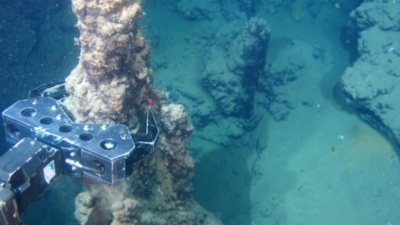
Environmental advocacy groups such as Greenpeace have been appealing to the UN’s International Seabed Authority (ISA) against giving license to companies to carry out deep-sea mining. Highlighting that the industry is inadequately regulated in a report published last week, Greenpeace has drawn attention to the threats facing the deep-ocean ecosystem from deep-sea mining.
Mining carried out in the ocean floor is called deep-sea mining. It is done to retrieve mineral deposits from 1,400 to 3,700 metres below the ocean’s surface using hydraulic pumps.
Rising demand for metals such as copper, nickel, aluminium, manganese, zinc and lithium and the depletion of these metals from terrestrial deposits have resulted in a growing interest in deep-sea mining.
Sixteen international mining companies have contracts to explore the seabed for minerals in the Indian Ocean and the Pacific Ocean. They have already begun exploring the deep sea – assessing the size, extent of mineral deposits, composition, distribution, and economic value. Together, the ear-marked area for extraction is about 1.5 million km2 of international seabed.
Deep-sea mining particularly targets polymetallic nodules or active and extinct hydrothermal vents, which contain valuable metals. While hydrothermal vents are fissures on the seafloor from which geothermally heated water discharges, polymetallic nodules are potato-sized rock accretions that harbour commercially valuable metals like manganese, nickel, cobalt and copper.
Environmental impact
As with all mining operations, deep sea mining raises questions about its potential environmental impact.
The seafloor contains an extensive array of geological features. These remote areas support species that are uniquely adapted to harsh conditions. In fact, many of these species are unknown to science. The mining activity could pose danger to this pristine ecosystem.
Corals, sponges, sea urchins, starfish, jellyfish, squid, octopus, shrimp, and sea cucumbers are some of the known species that inhabit the depths of the oceans. Some of them are slow-growing, so a full recovery after mining could take thousands, if not millions of years – if a recovery is possible at all.
The sediment plumes and waste discharge from mining could trigger algae blooms and introduce toxic metals into marine food chains. This mining waste could also travel through the ocean and put many regions of the ocean under threat.
Light and noise pollution from the mining activity could disrupt a multitude of species attuned to living in the dark and those that use sound to communicate with other members of the species.
Picture Credit : Google

